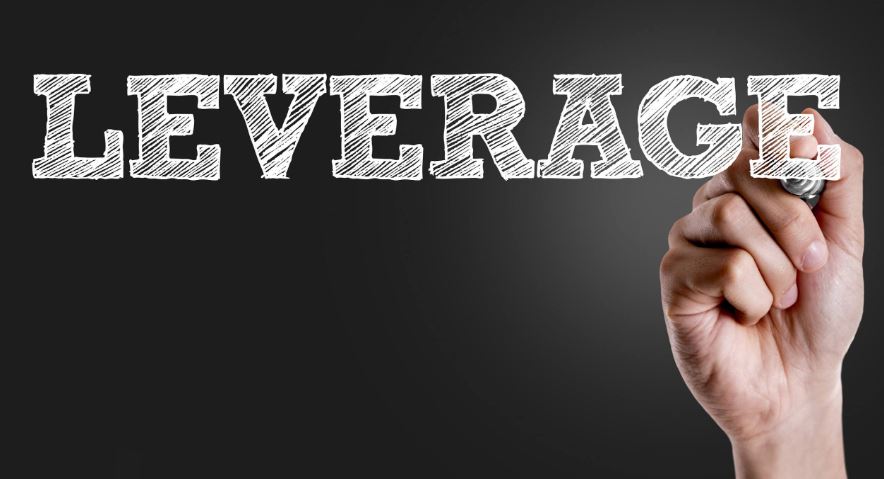 Leverage is a powerful tool that can help traders maximize their profits, but it’s also one of the riskiest aspects of trading.
Leverage is a powerful tool that can help traders maximize their profits, but it’s also one of the riskiest aspects of trading.
For beginners, it’s essential to understand the concept of leverage and how to use it effectively.
In simple terms, leverage is the use of borrowed funds to increase the potential return on investment.
When trading, leverage allows traders to control a large amount of an asset with a smaller amount of capital. For example, if a trader has a leverage ratio of 1:100, they can control $10,000 worth of an asset with just $100 of their own money.
While leverage can amplify potential profits, it can also magnify losses, making it a risky proposition for beginner traders.
Therefore, it’s important to understand the best leverage for beginners to reduce the risk of financial loss.
Here are some of the best leverages for beginners:
Low leverage
When it comes to trading, beginners should always start with low leverage. The reason for this is simple: the lower the leverage, the lower the risk. A leverage ratio of 1:10 or 1:20 is ideal for new traders, as it allows them to have some leverage but limits their exposure to the market’s volatility.
With a lower leverage ratio, traders can make trades with smaller lot sizes, which reduces their risk of significant losses. By using lower leverage, beginners can gradually build their trading skills and experience without risking too much capital.
Demo Accounts
Another way to reduce the risk of using leverage as a beginner is to use a demo account. Demo accounts allow traders to practice their trading strategies without risking real money. These accounts usually have simulated market conditions, which provide a realistic trading environment.
Demo accounts are an excellent way for beginners to test their trading strategies and get familiar with the mechanics of trading without risking their capital. They can also experiment with different leverage ratios to see how it affects their trades.
Understand the Market
Before using leverage, beginners must understand the market they are trading in. They should have a solid understanding of the market’s trends, its volatility, and its history. This knowledge will help them make informed decisions about the trades they make and reduce the risk of significant losses.
Beginners should also have a trading plan that outlines their strategy for trading in the market. This plan should include their risk management strategy, their profit targets, and their stop-loss orders.
Use Stop Loss Orders
Stop-loss orders are a crucial part of risk management when using leverage. They are orders that automatically close a trade when a certain price level is reached. This helps traders limit their losses and avoid the risk of significant losses.
Beginner traders should always use stop-loss orders when trading with leverage to minimize their risk. The stop-loss order should be placed at a level that the trader is comfortable with losing, and it should never be moved to try and recoup losses.
Avoid Margin Calls
Margin calls are when a trader’s account falls below the required margin level, and they are required to deposit more funds to cover the margin. Margin calls can be costly and can result in significant losses if not handled properly.
Beginner traders should always monitor their margin level and avoid margin calls by having adequate funds in their trading account.
They should also ensure that they have a solid understanding of the market they are trading in and use stop-loss orders to limit their risk.
Gradually Increase Leverage
As traders gain more experience and confidence in their trading strategies, they can gradually increase their leverage. This should be done slowly and with caution, as increasing leverage also increases the risk of significant losses.
It’s important to note that increasing leverage does not necessarily mean increasing profits. Traders should always focus on their trading plan and risk management strategies, regardless of their leverage ratio.
Conclusion
In conclusion, leverage can be a powerful tool for traders, but it can also be risky, especially for beginners.
Therefore, it’s essential to understand the best leverages for beginners to reduce the risk of significant financial loss.
Beginners should always start with low leverage and gradually increase it as they gain experience and confidence in their trading strategies. They should also use demo accounts to practice their trading skills and experiment with different leverage ratios.
Additionally, beginners should have a solid understanding of the market they are trading in and use stop-loss orders to limit their risk.
They should also avoid margin calls by having adequate funds in their trading account and monitoring their margin level.
In summary, leverage is a double-edged sword that can help traders maximize their profits but can also magnify their losses.
Therefore, it’s crucial for beginners to use leverage wisely and with caution to minimize their risk and ensure long-term success in trading.








